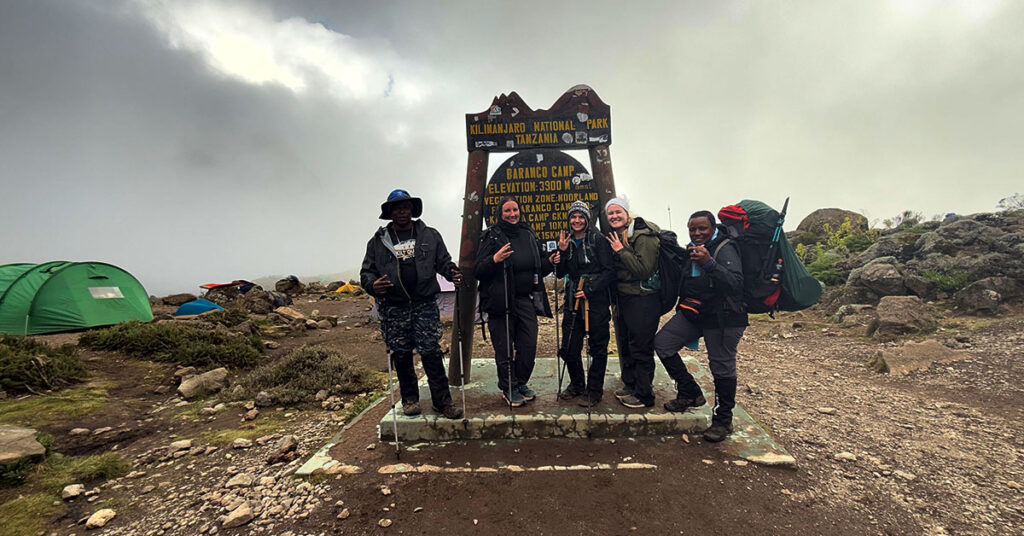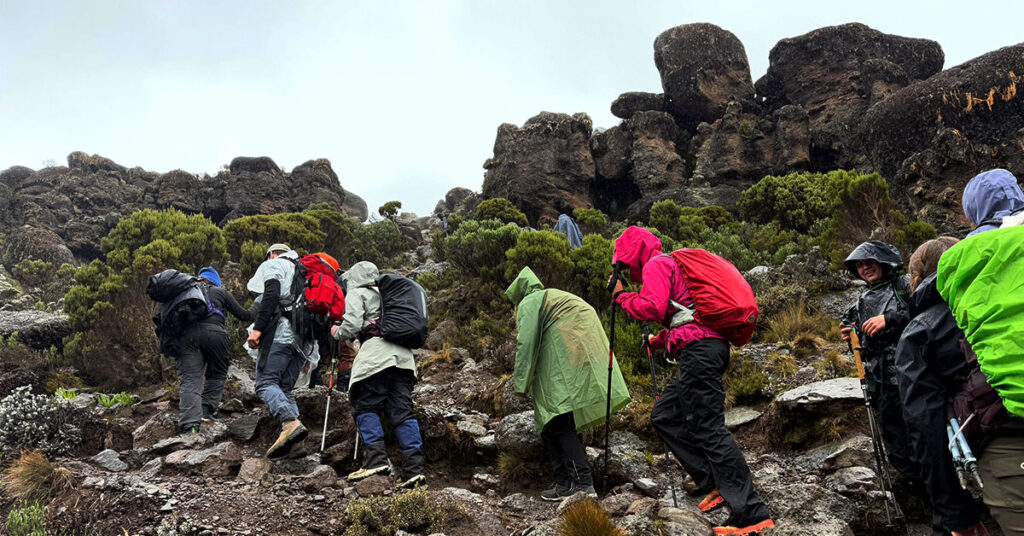The hamstrings (back of the thighs) are used constantly during hiking, especially when descending.
Your calves are worked heavily on the steep slopes of Kilimanjaro, especially when trekking uphill and downhill.
4. Hip Flexor Stretch
Climbing uphill puts a lot of pressure on the hip flexors. Stretching these muscles will relieve tightness and discomfort.
How to Do It:
- Step one leg forward into a lunge position, ensuring that your knee is at a 90-degree angle.
- Lower your hips towards the floor, feeling the stretch in your hip flexors.
- Hold for 20-30 seconds, then switch legs.
5. IT Band Stretch
The iliotibial (IT) band runs along the outer thigh and is often tight after long hikes.
How to Do It:
- Stand tall and cross one leg in front of the other.
- Lean towards the side of the leg that is behind, feeling the stretch along the outer thigh.
- Hold for 20-30 seconds, and then switch sides.
6. Lower Back Stretch
After days of carrying a backpack and trekking uphill, your lower back may feel tight. Stretching your back helps alleviate discomfort.
How to Do It:
- Lie on your back with your knees bent and feet flat on the floor.
- Bring one knee towards your chest and gently pull it closer to your body.
- Hold for 20-30 seconds, then switch legs.
7. Upper Body Stretch
Don’t forget about your upper body! Your arms, shoulders, and neck work hard during the climb, especially when carrying a pack.
How to Do It:
- Stretch your arms overhead and gently lean from side to side to stretch your sides and shoulders.
- Interlace your fingers and push your palms forward to stretch your shoulders and upper back.
- Hold each stretch for 15-20 seconds.

